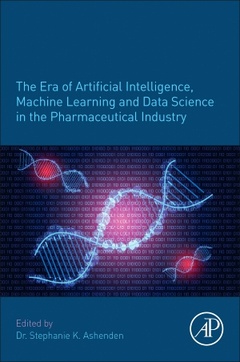Description
The Era of Artificial Intelligence, Machine Learning, and Data Science in the Pharmaceutical Industry
Coordinator: Ashenden Stephanie K.
Language: English
Subjects for The Era of Artificial Intelligence, Machine Learning...:
264 p. · 19x23.3 cm · Paperback
Description
/li>Contents
/li>Biography
/li>Comment
/li>
The Era of Artificial Intelligence, Machine Learning and Data Science in the Pharmaceutical Industry examines the drug discovery process, assessing how new technologies have improved effectiveness. Artificial intelligence and machine learning are considered the future for a wide range of disciplines and industries, including the pharmaceutical industry. In an environment where producing a single approved drug costs millions and takes many years of rigorous testing prior to its approval, reducing costs and time is of high interest. This book follows the journey that a drug company takes when producing a therapeutic, from the very beginning to ultimately benefitting a patient?s life.
This comprehensive resource will be useful to those working in the pharmaceutical industry, but will also be of interest to anyone doing research in chemical biology, computational chemistry, medicinal chemistry and bioinformatics.
1. Introduction Drug Discovery 2. Intro to ML 3. Data Types 4. Target ID and Val 5. Hit Discovery 6. Lead Optimisation 7. Evaluating Safety and Toxicity 8. Precision Medicine and Finding the 'right patient': Date-driven Identification of Disease Subtypes 9. Image Analysis in Drug Discovery 10. Clinical Trials, Real World Evidence and Digital Medicine 11. To and From the Patient
Dr. Ashenden is a very early career researcher, but has an extensive research network, academic and industrial experience, and a drive to conduct and report high quality research. She will be working with more experienced researchers on the project to help guide and offer experience.
- Demonstrates how the prediction of toxic effects is performed, how to reduce costs in testing compounds, and its use in animal research
- Written by the industrial teams who are conducting the work, showcasing how the technology has improved and where it should be further improved
- Targets materials for a better understanding of techniques from different disciplines, thus creating a complete guide



